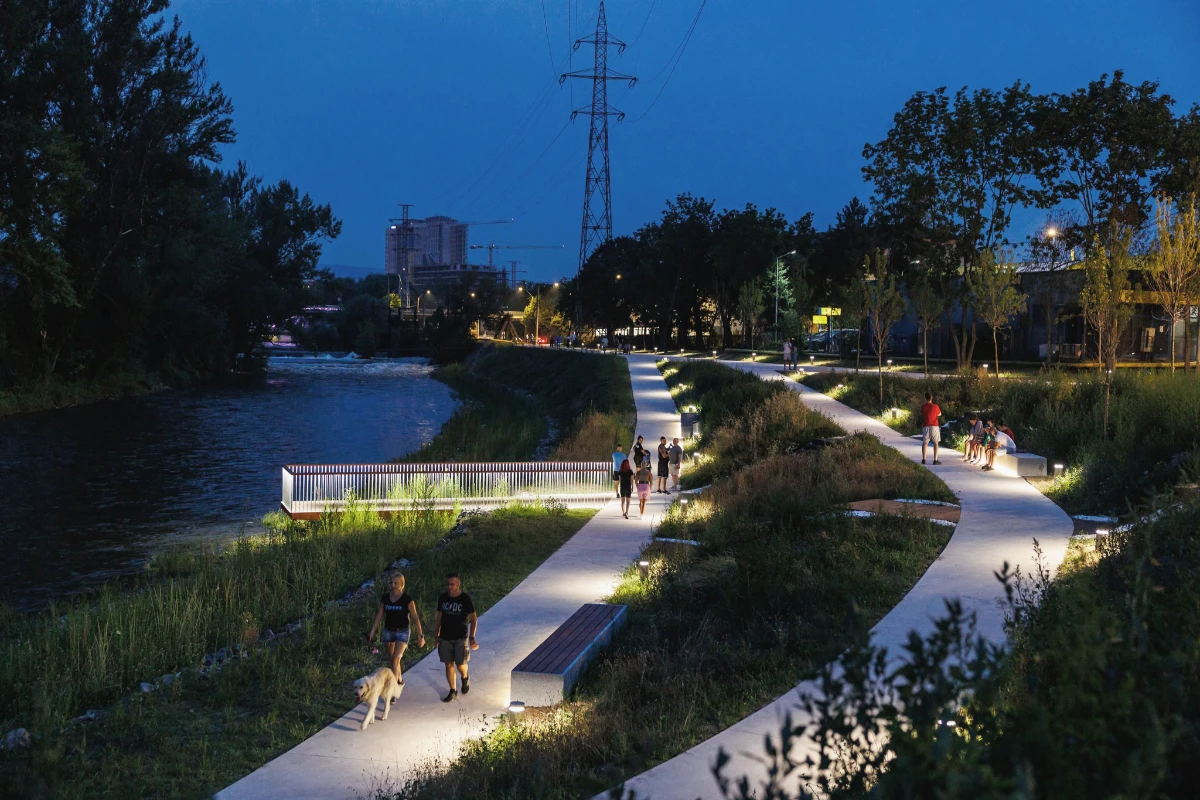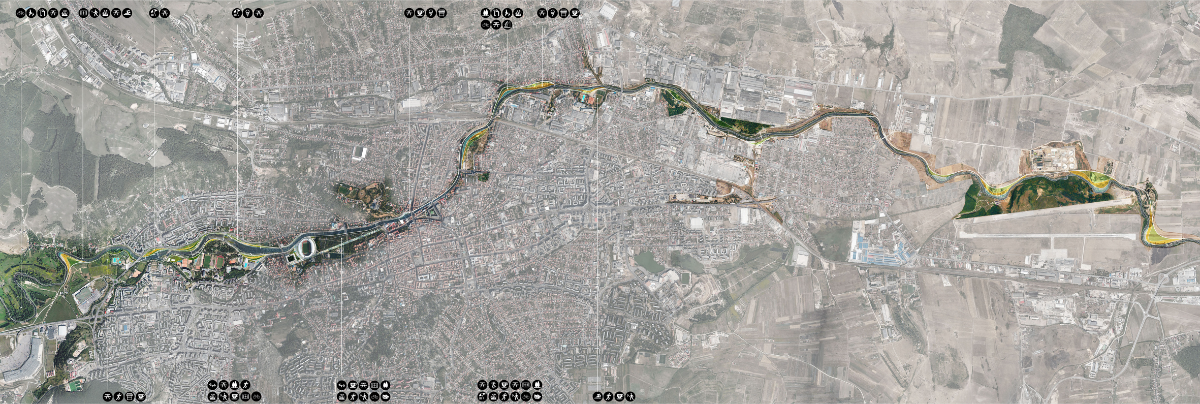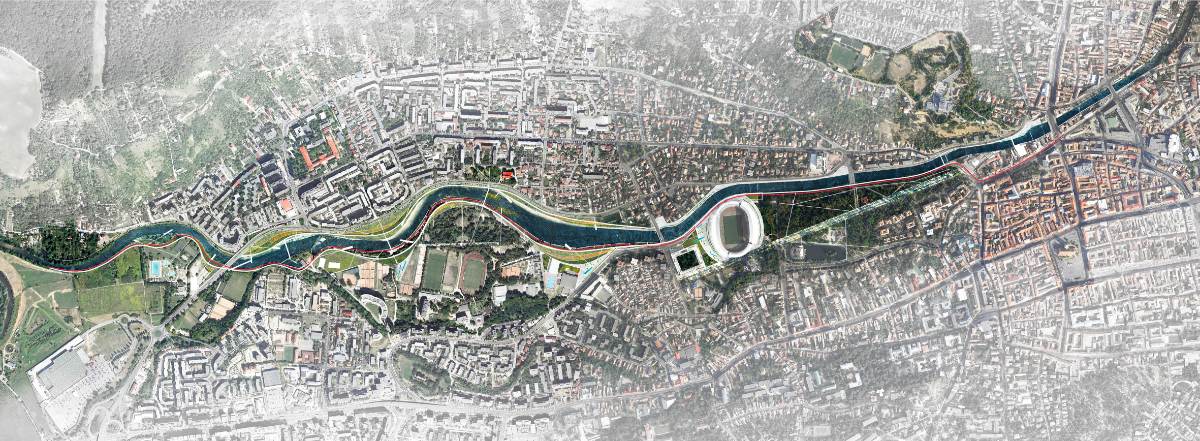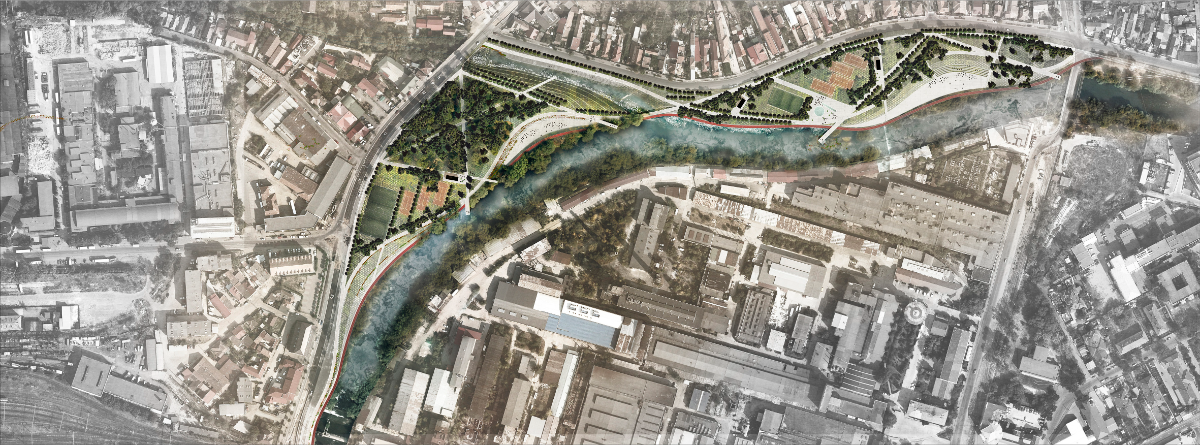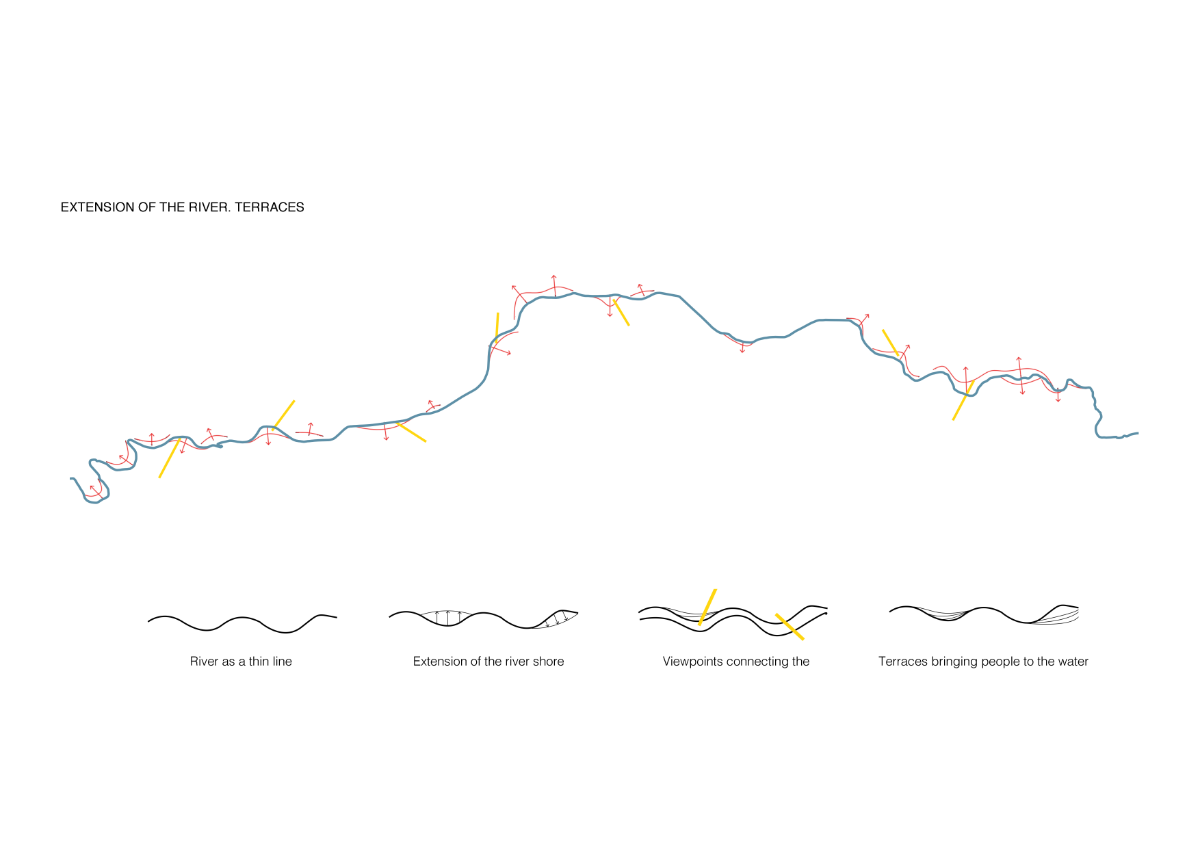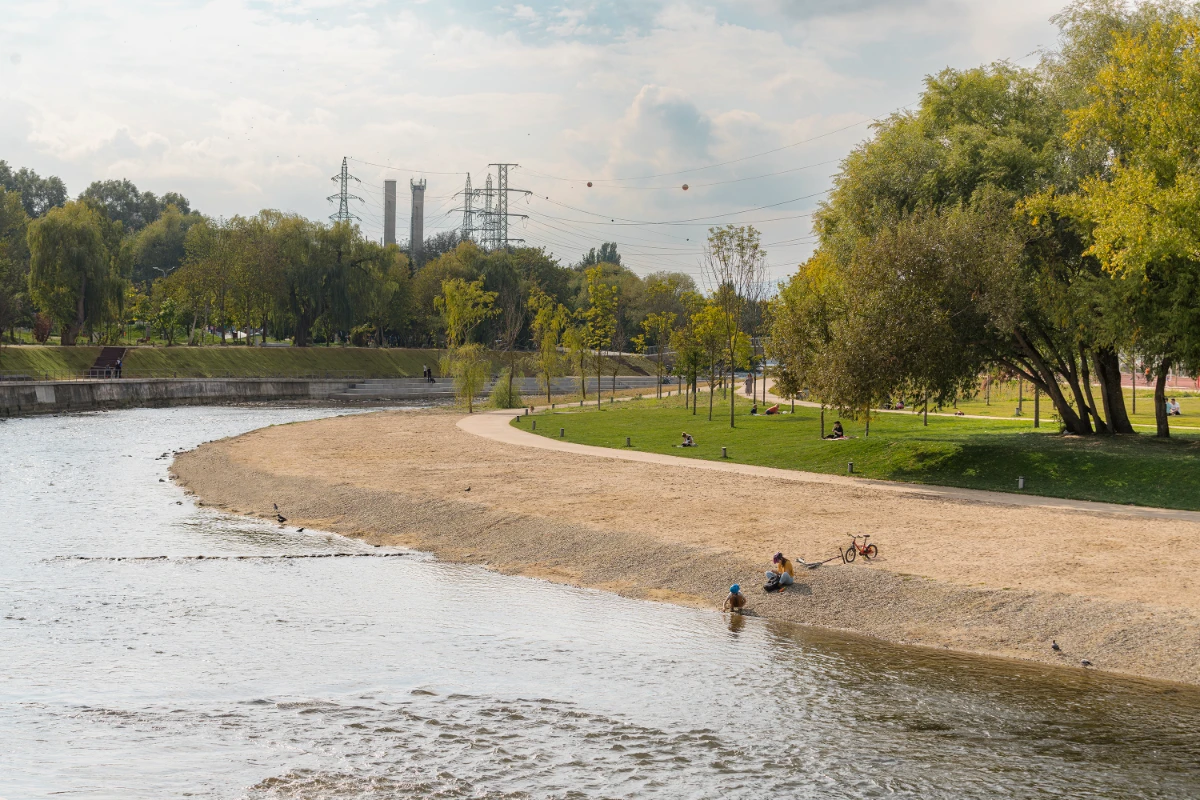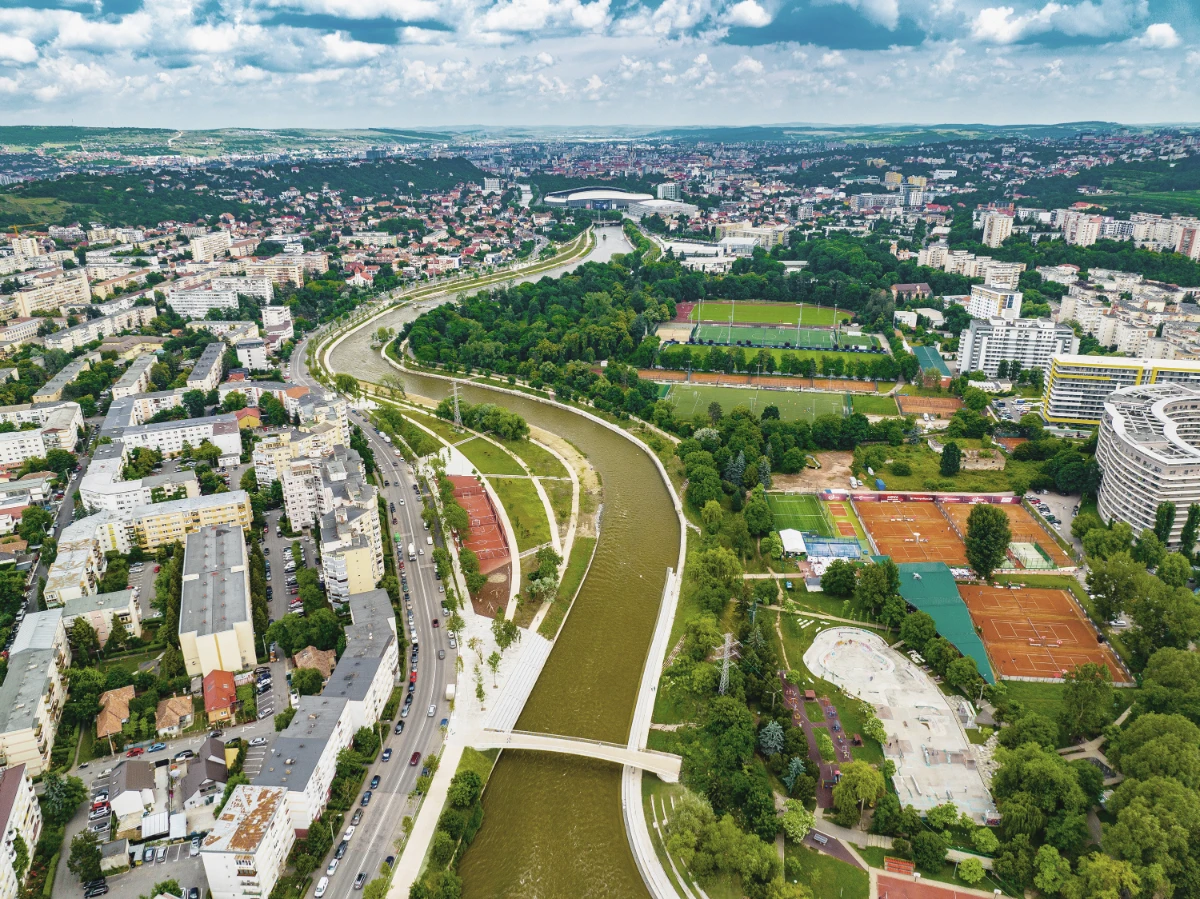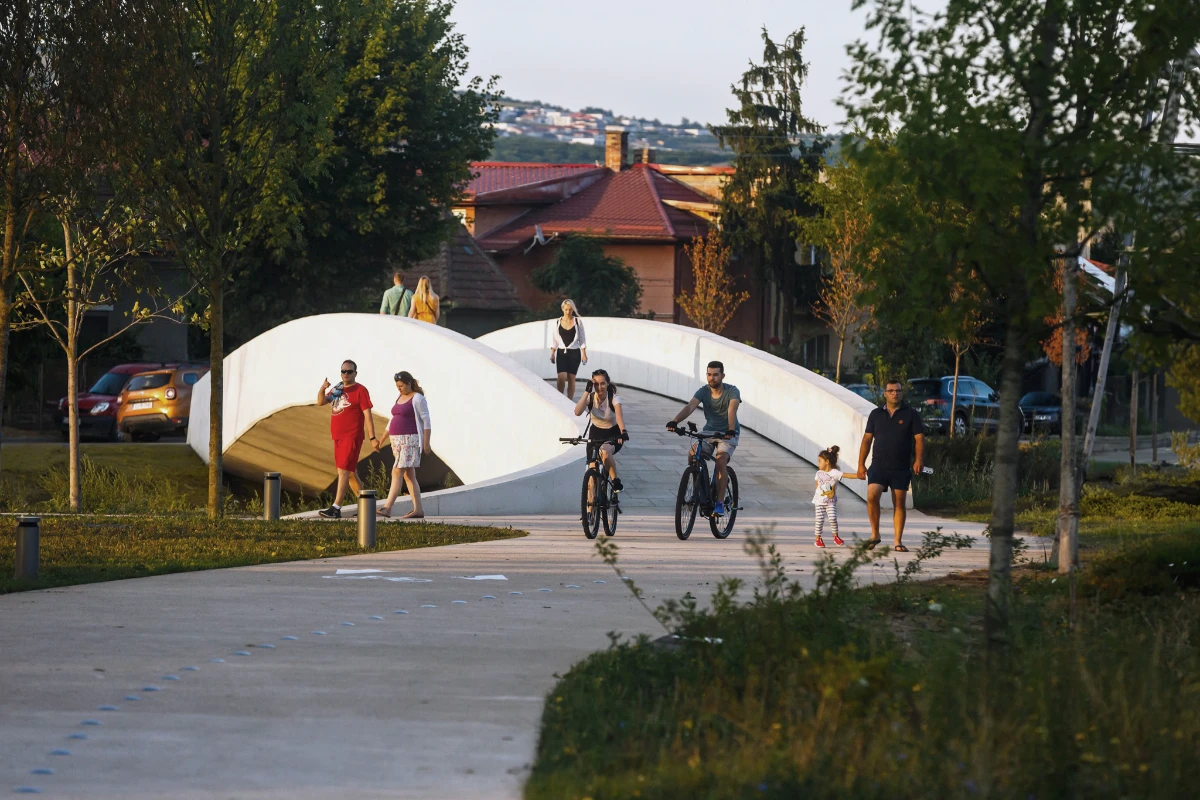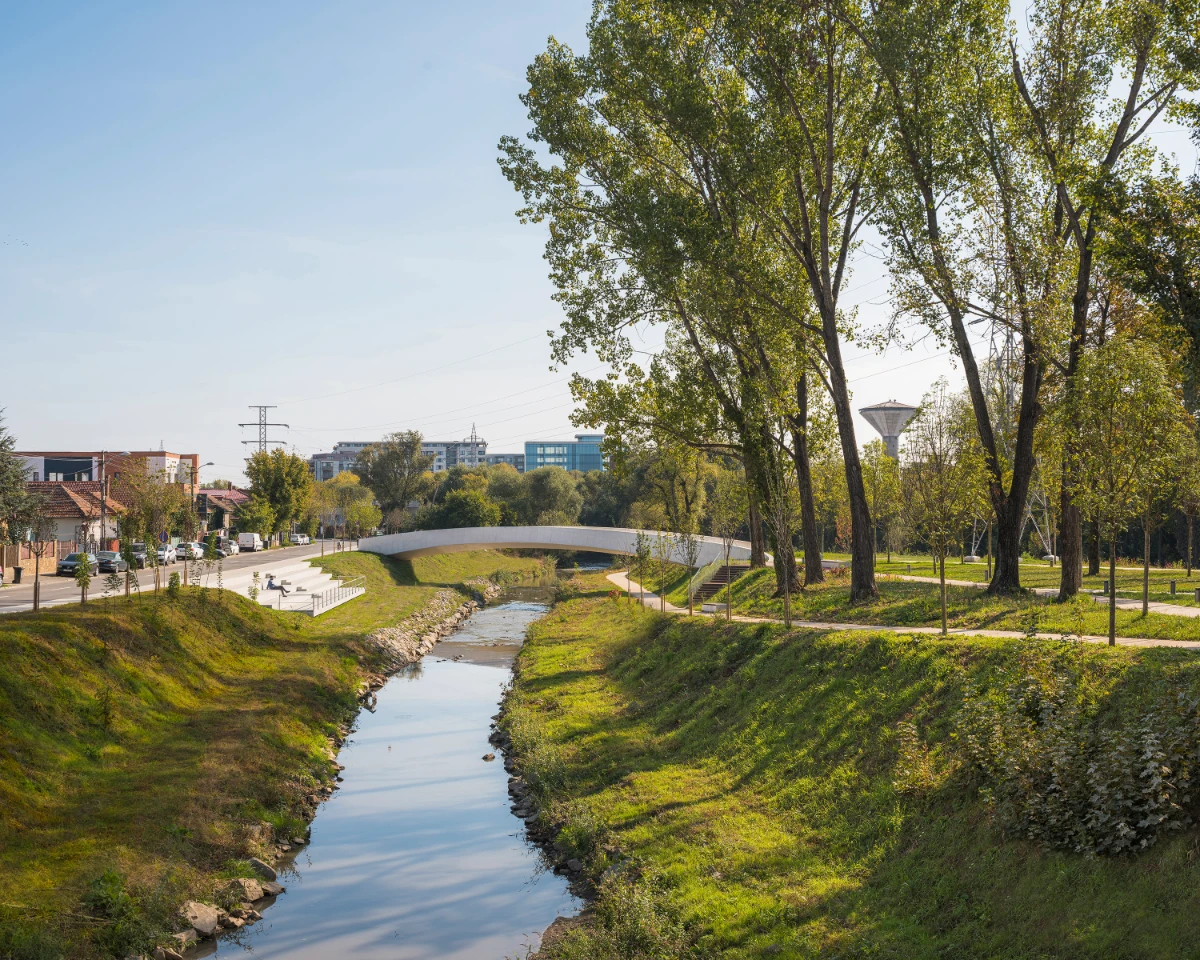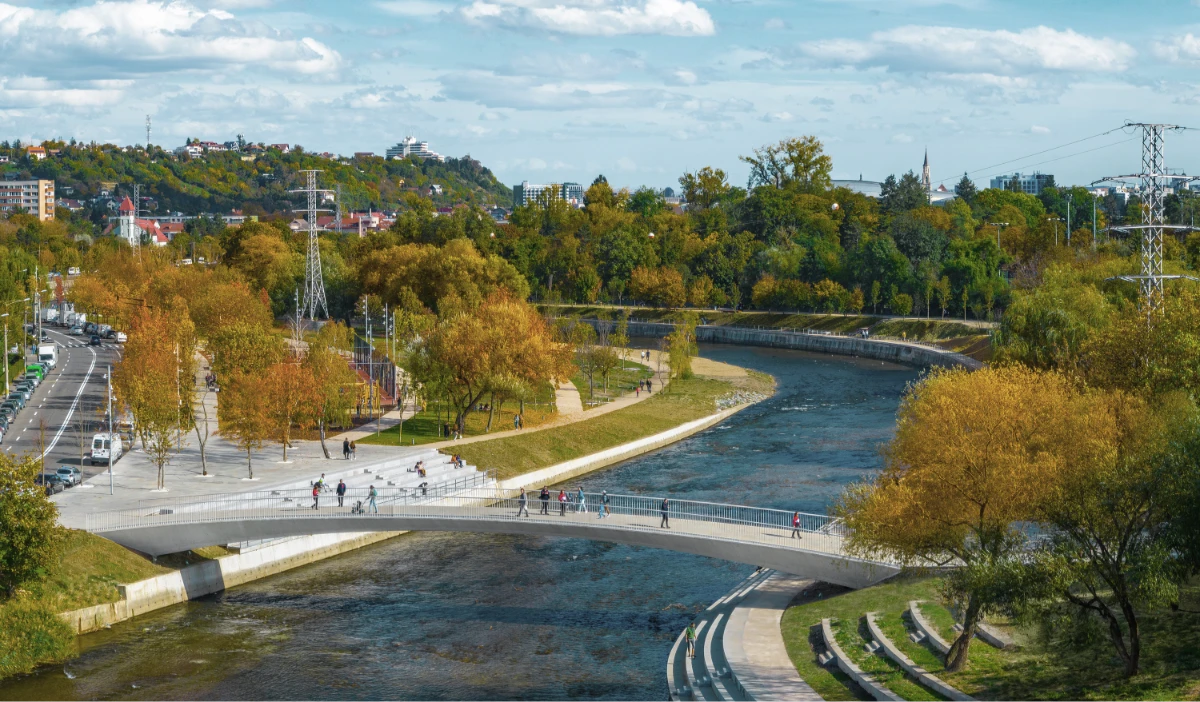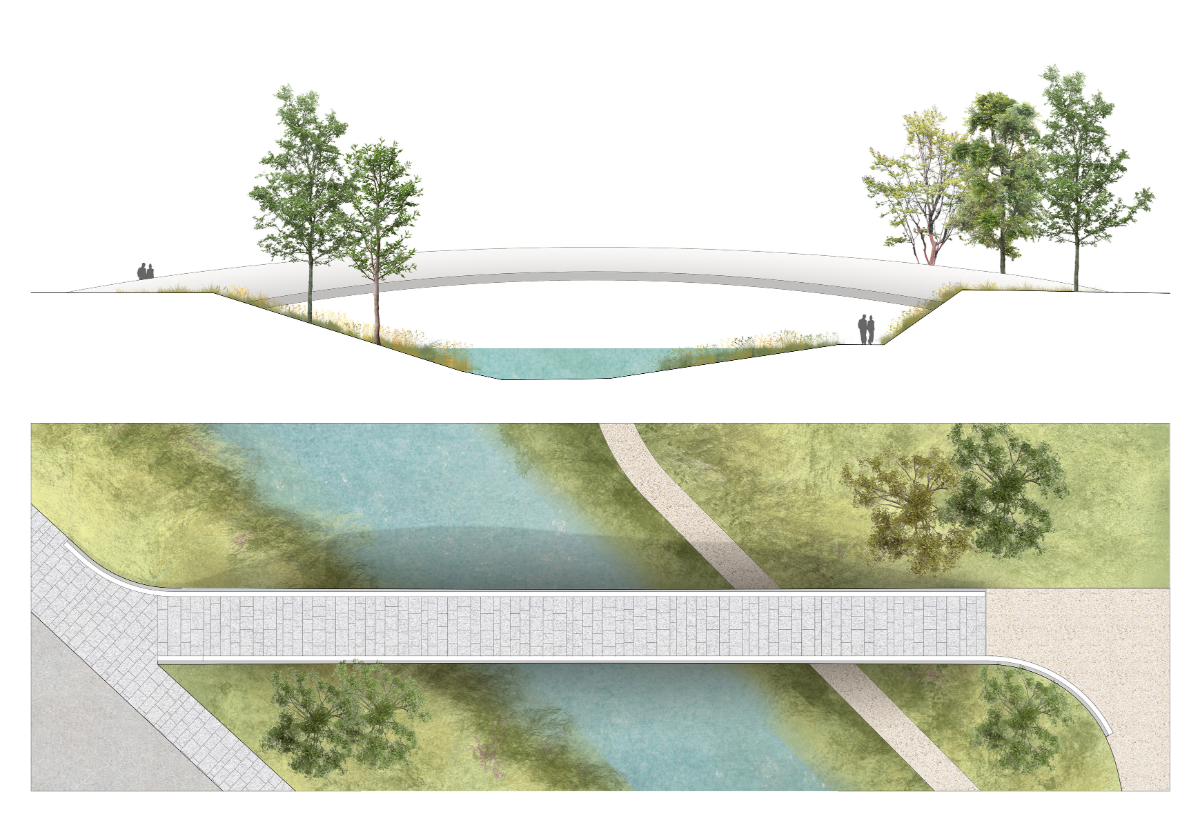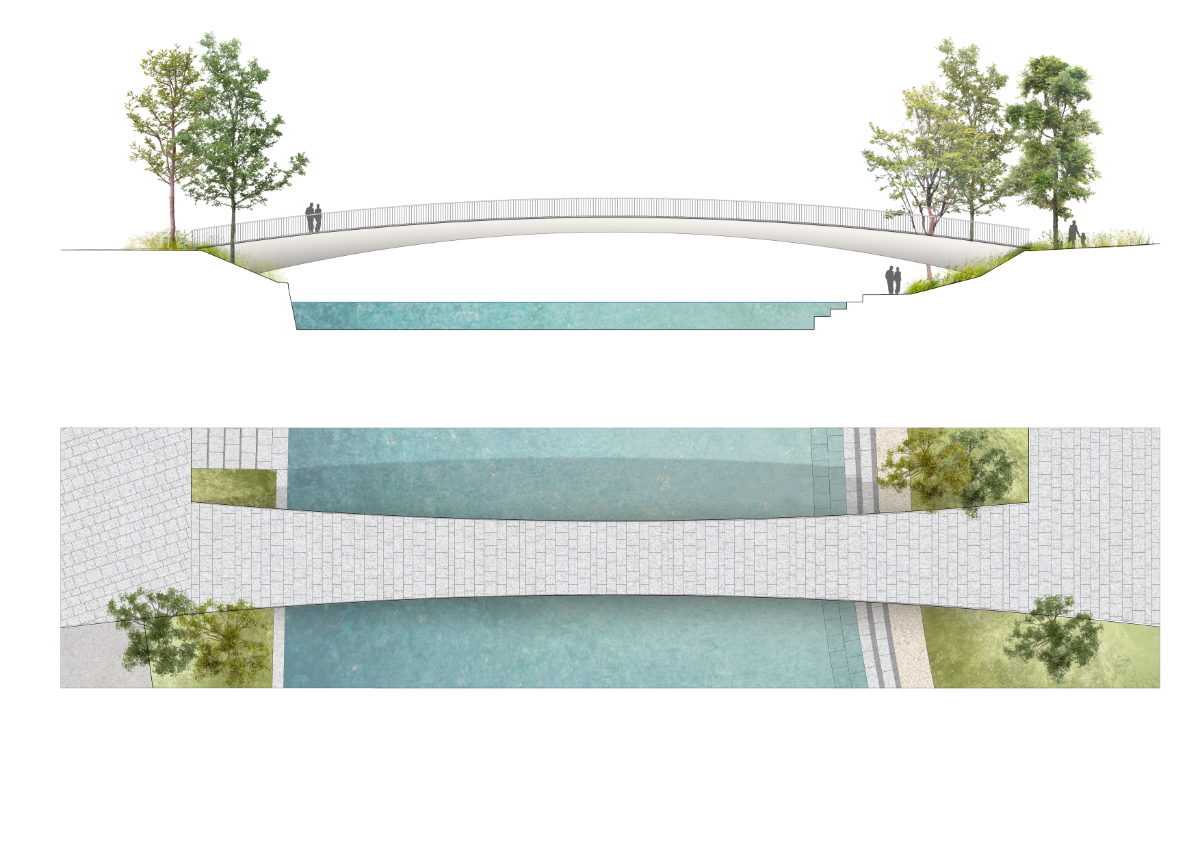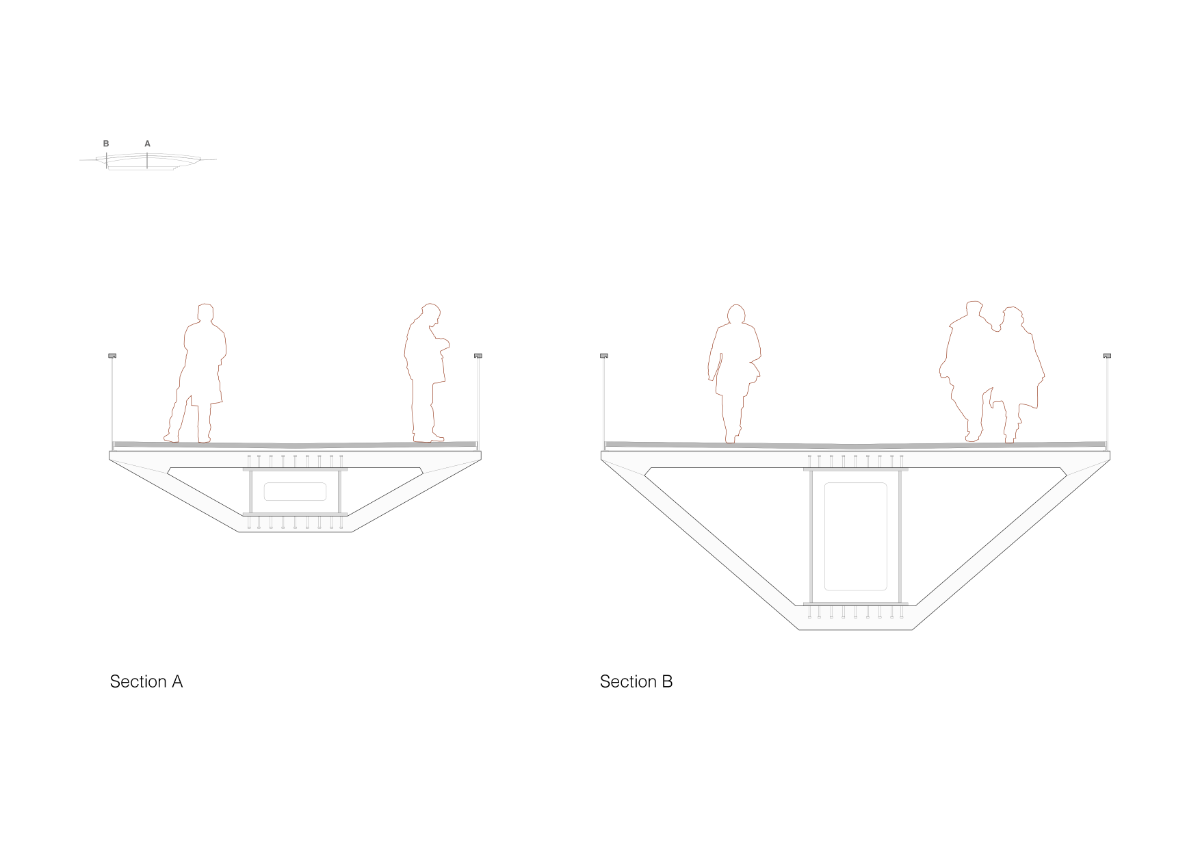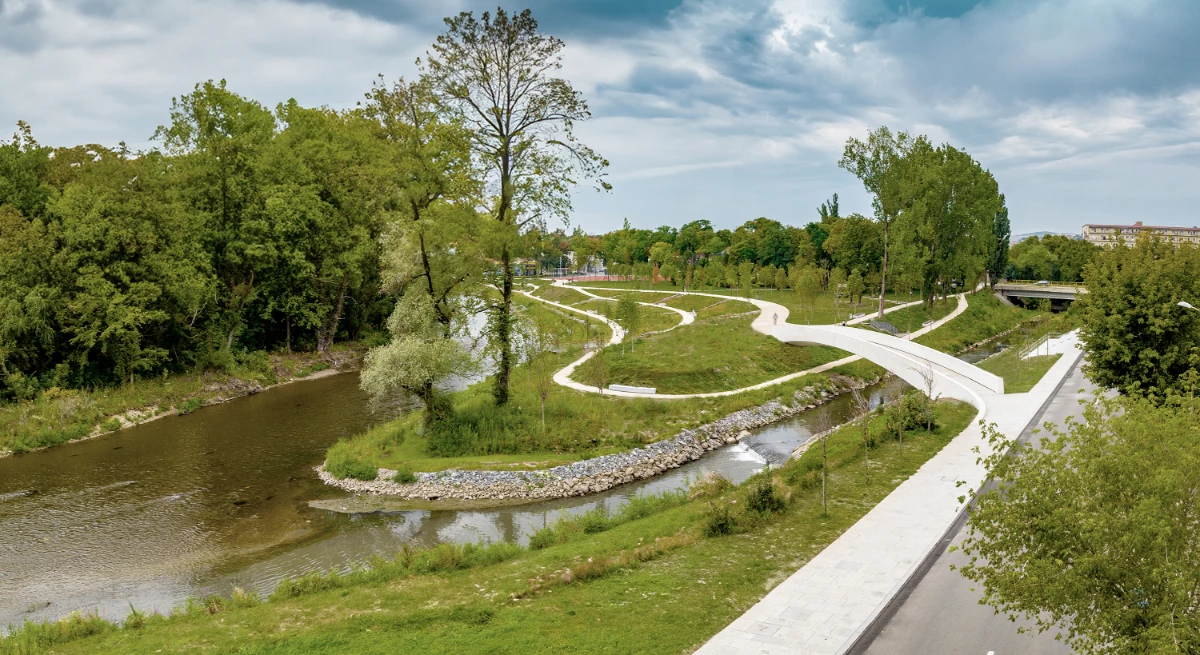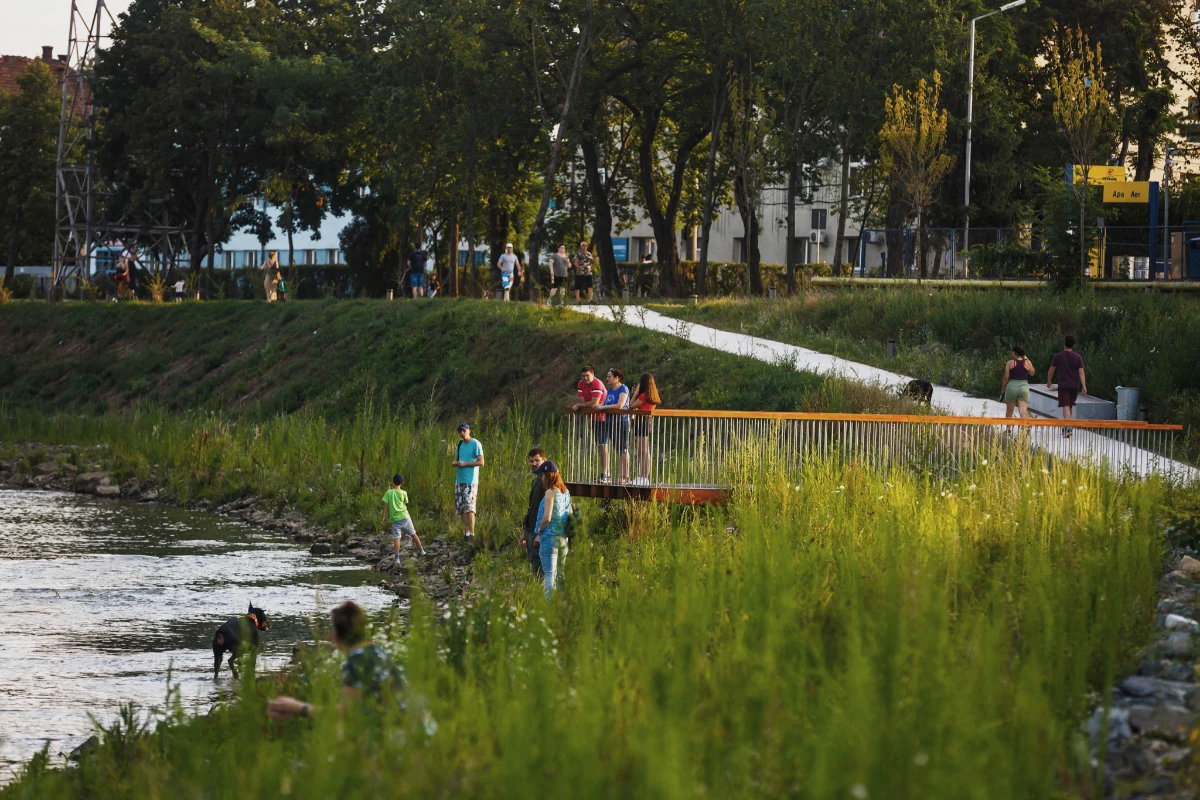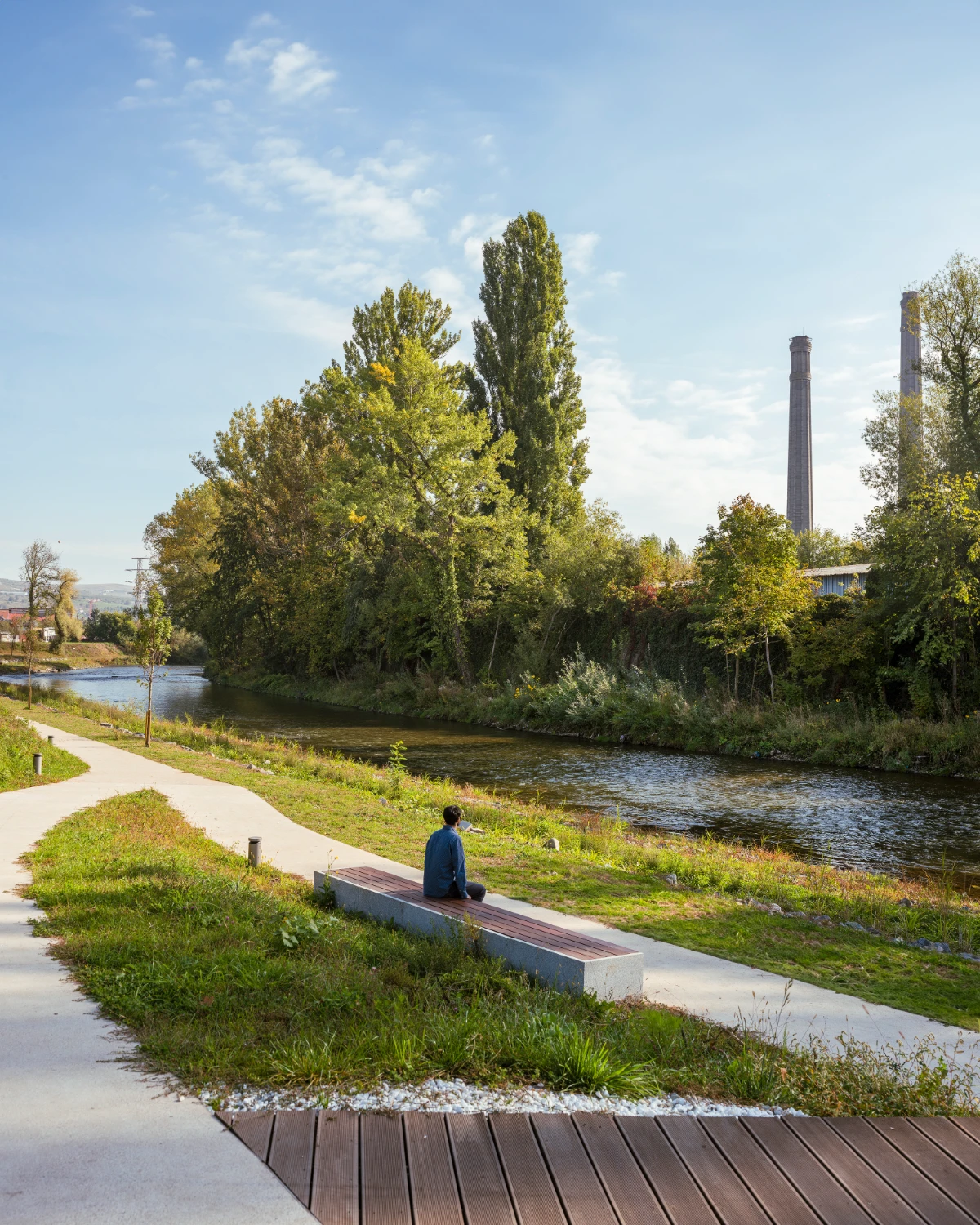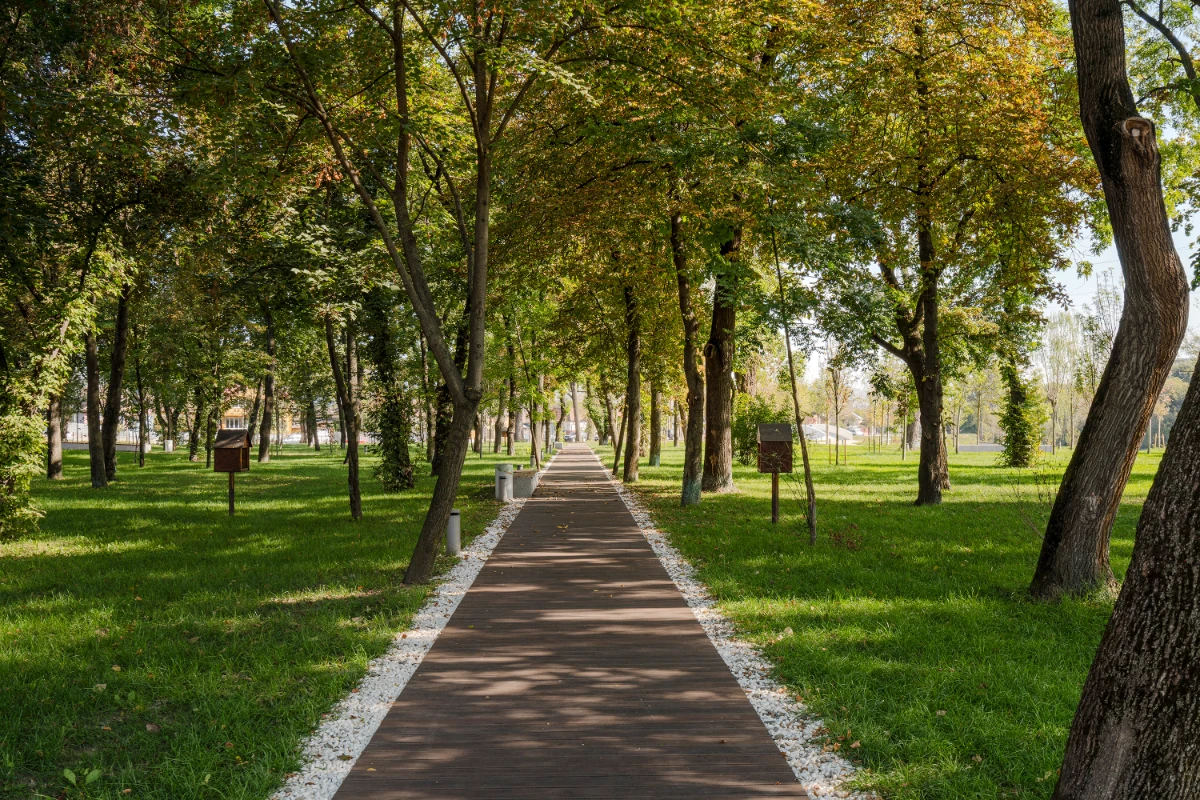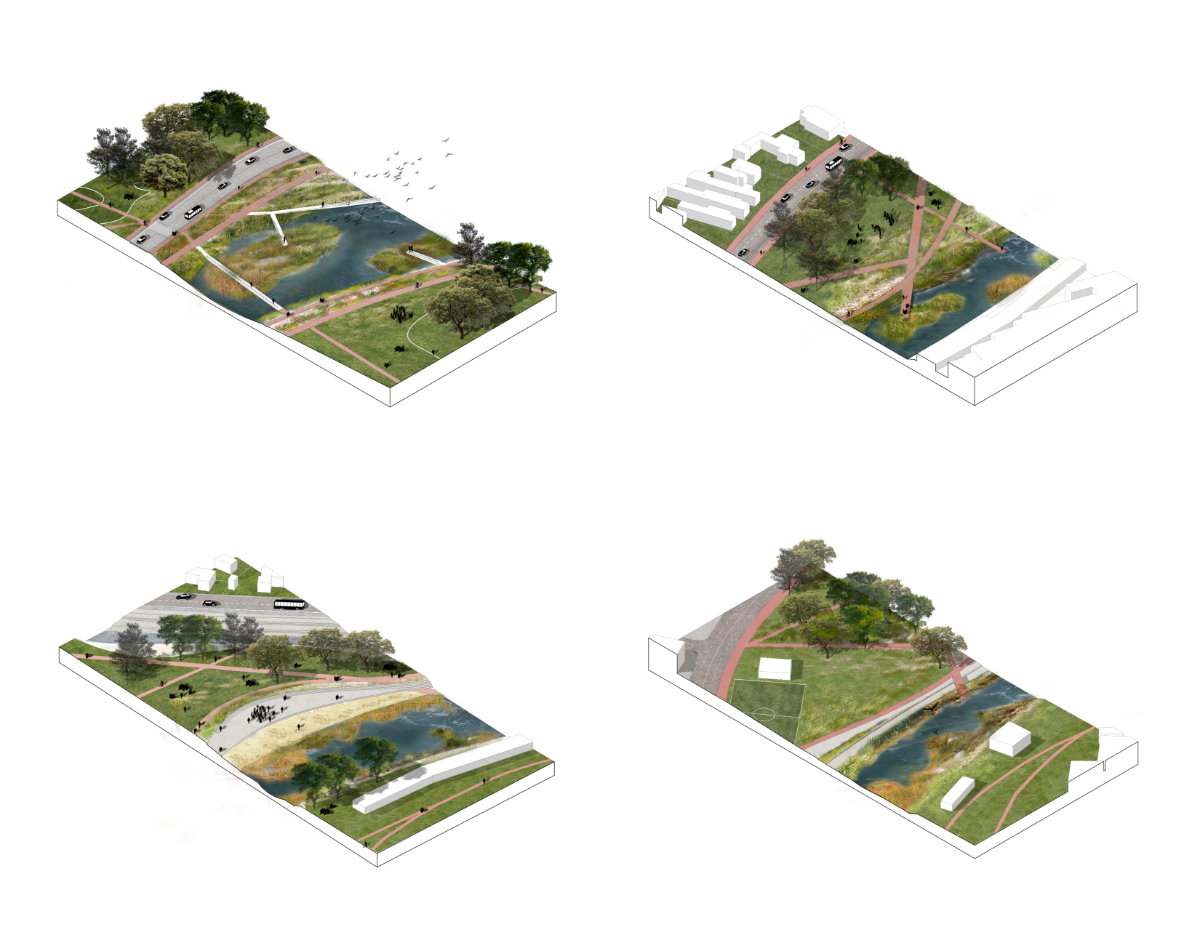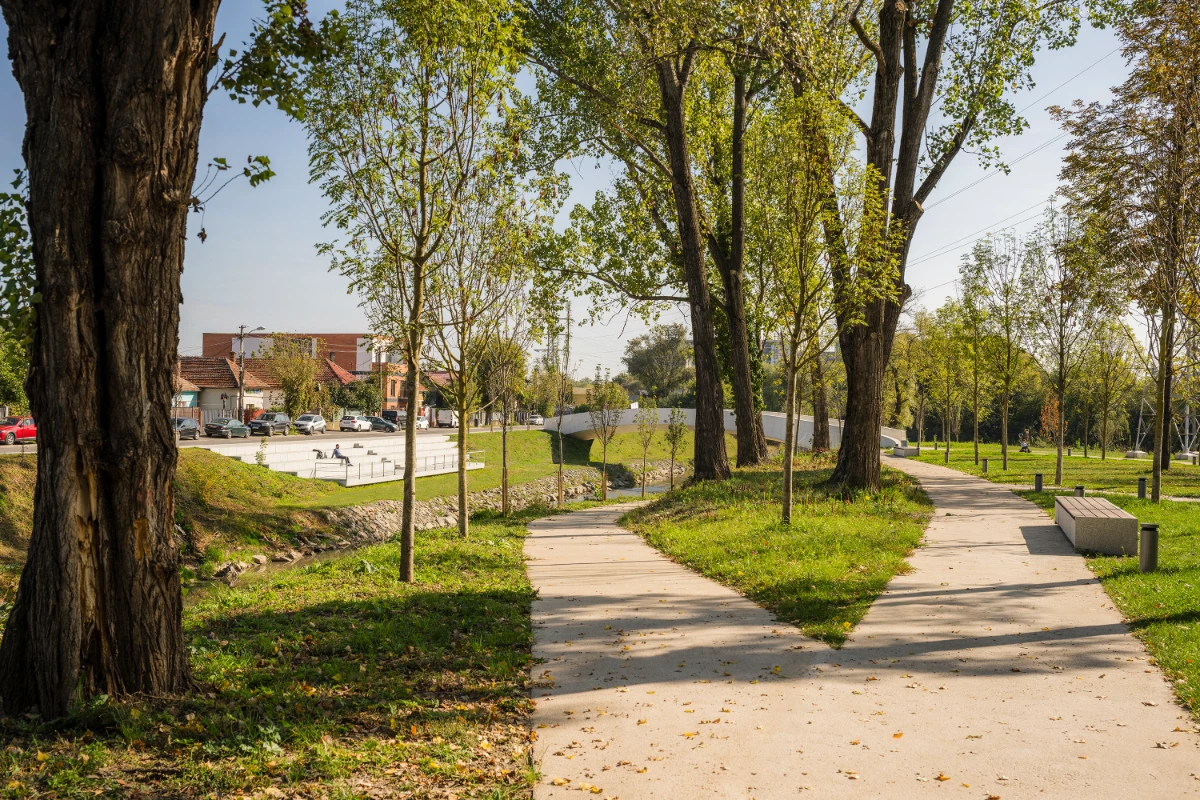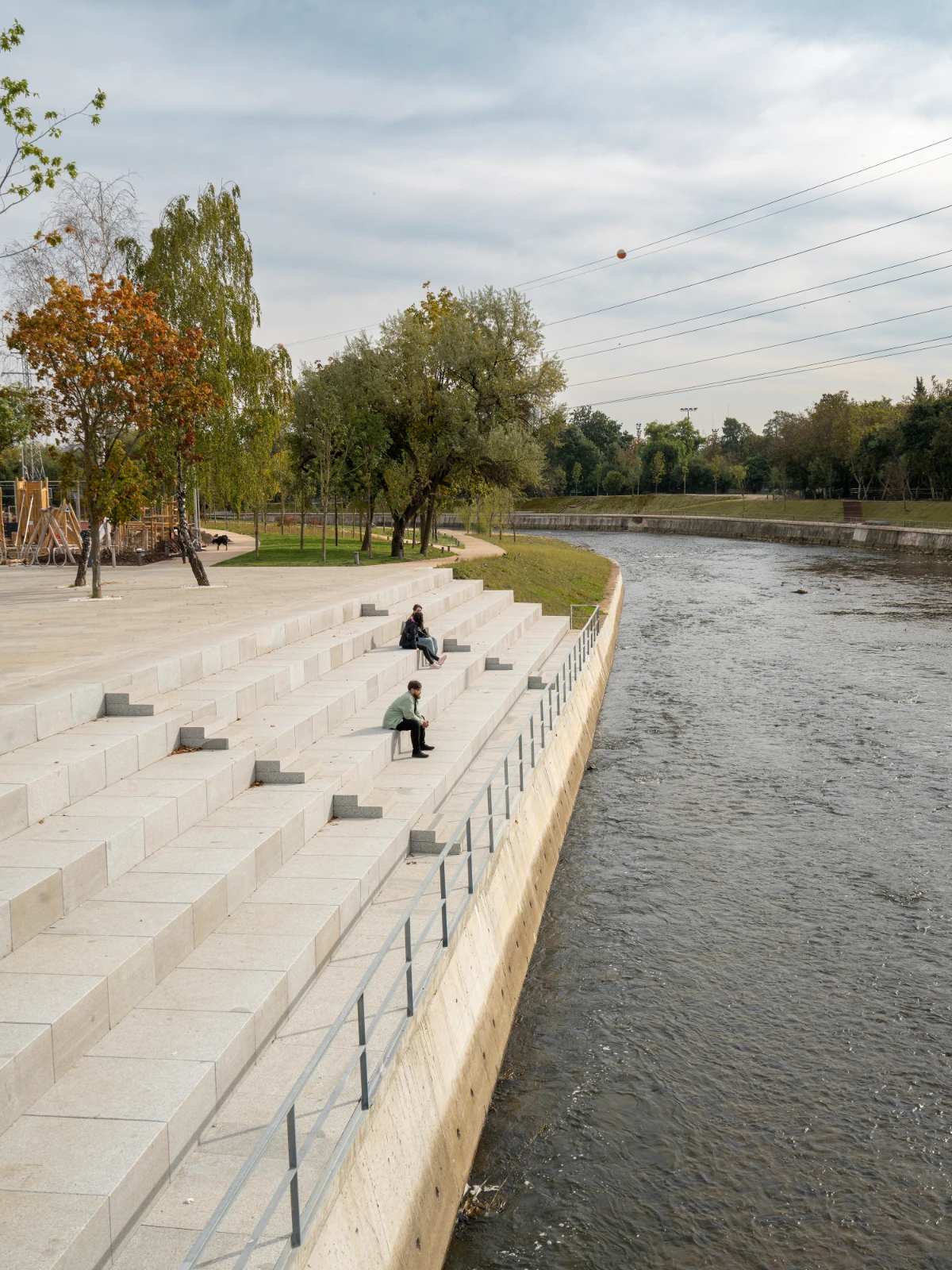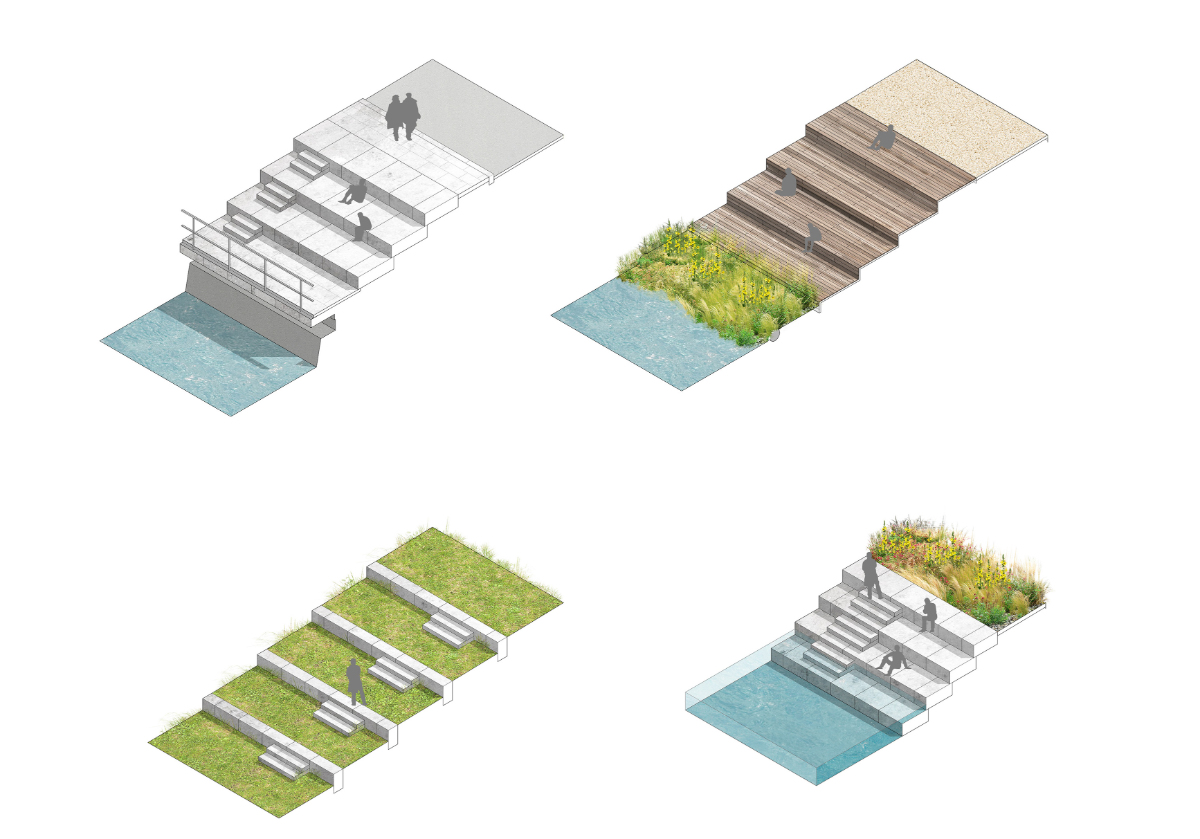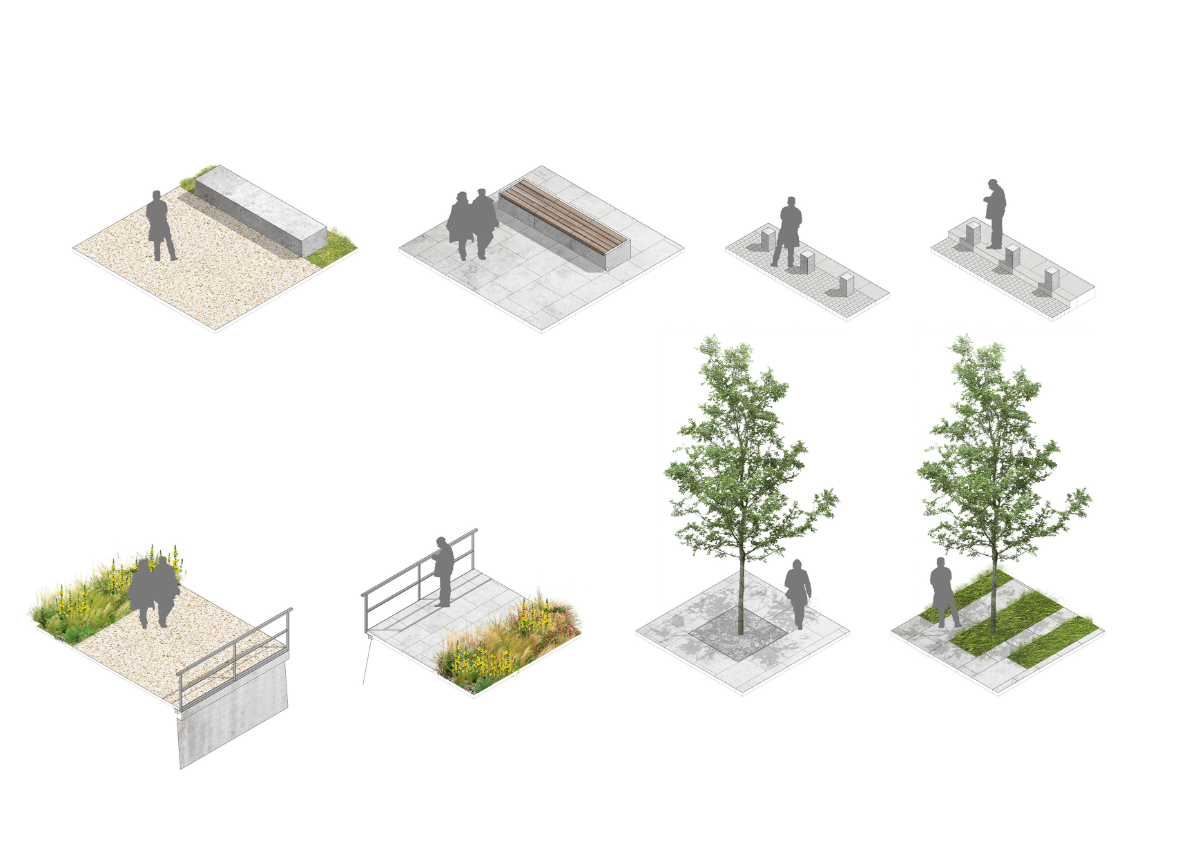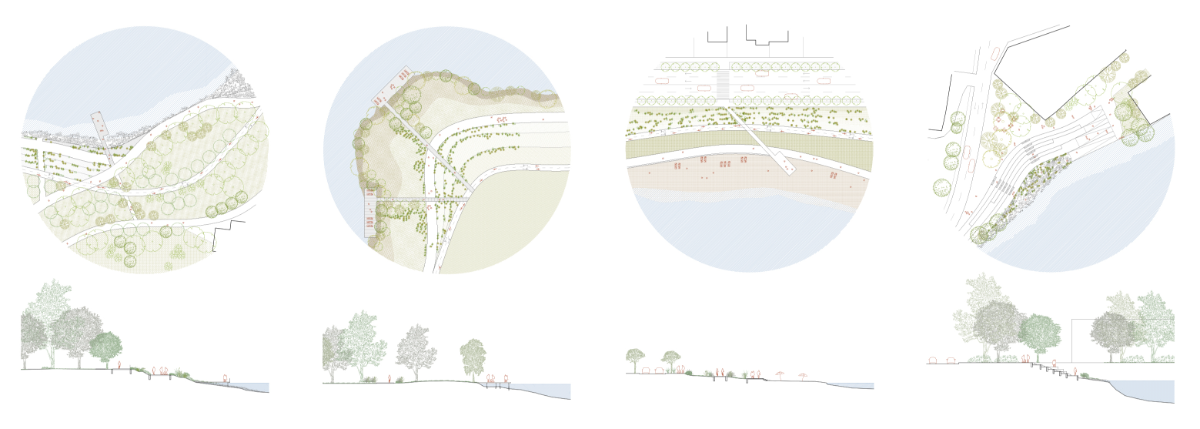The project understands the Somes River as a green corridor capable of connecting other nearby public spaces thanks to the incorporation of a network of paths, bicycle lanes and pedestrian bridges. The course of the river acquires thickness, giving rise to a set of new public spaces: parking lots converted into squares overlooking the river and riverbanks with integrated beaches and bleachers. Thus, the riverbanks are activated as collective spaces for accessing the river and engaging with its fauna and flora.
The project recovers the natural character of the river banks, expanding and modifying the pre-existing narrow and hard edge into a softer and more natural environment. Thus, the intervention promotes biodiversity, microclimate formation, CO2 absorption and invasive species control.
The project redesigns the river as a new social space that functions at different scales and with different programs, a new green infrastructure, a meeting and exchange space between the various communities that inhabit the city of Cluj-Napoca, with over 300,000 inhabitants.
ACTIVACIÓN DEL RÍO SOMES
The Somes River crosses the city of Cluj-Napoca, Romania, for 15 kilometers, encountering diverse urban conditions: the historic center, industrial areas and housing neighborhoods.
During the second half of the 20th century, its banks were modified with concrete walls, which established a drastic difference in height and limited the visual and physical connection between the city and the river.
This project stems from an open international Competition in 2017. It is an example of urban regeneration and renaturalization, which revalues the role of the Somes for the city, as well as the link between the two. The river is conceived as a green corridor that, through a network of sustainable mobility paths, connects multiple public spaces and green areas. In turn, a system of natural terraces is designed to renaturalize the environment, transforming the hard boundary between the city and the river into a wider and more permeable riverbank that allows for biodiversity.
The river as a green connector and a dignified public space.
The project understands the Somes as a green corridor capable even of connecting with other nearby green spaces, which were functioning in isolation such as the Simion Bărnuțiur Central Park or the Cetățuia Park, thanks to the incorporation of a network of pedestrian paths and bike lanes.
Its course acquires thickness due to the activation of a set of new public spaces: parking lots converted into squares overlooking the river and banks incorporating beaches and bleachers. The riverbanks are, thus, activated as collective spaces to contemplate, enjoy and access the course of the river, its fauna and flora.
Renaturalization
While it was important to transform the Somes into a connecting spine of public spaces, it was also essential to enhance its context and ecological values. The project recovers the natural character of the river banks, expanding and modifying the pre-existing thin and hard edge into a softer and more natural environment. This is achieved by widening the river section, which supports a system of terraces. And it allows the banks to become a more diverse ecosystem which hosts different species of local vegetation, rocks, sand and biorolls. Biodiversity, microclimate formation, CO2 absorption and invasive species control are promoted.
Pole of community attraction and interdisciplinary collaboration
The project redesigns the river as a new social space that functions at different scales and programs, a space of encounter and exchange between the diverse communities that inhabit the city.
The recovery of the riverbanks has multiple benefits, beyond social strata and physical boundaries. It acts as a new participatory infrastructure that addresses both local and global contexts. It proposes a new framework for dialogue and coexistence through architecture, and brings together the efforts of a broad multidisciplinary team, Spanish and local, made up of professionals in architecture, landscape architecture, engineering, urban planning, as well as government agencies and the everyday users of the site.

